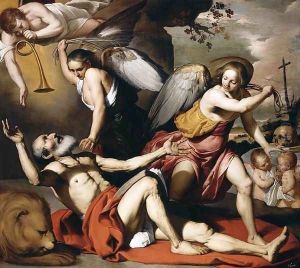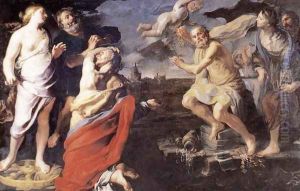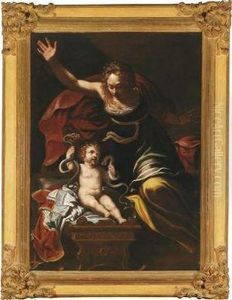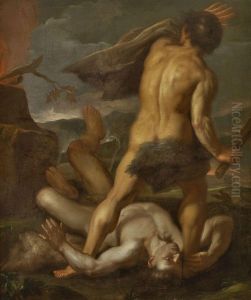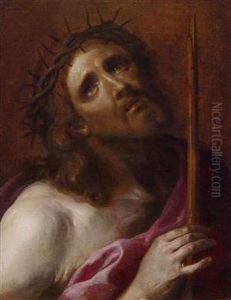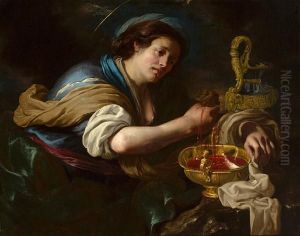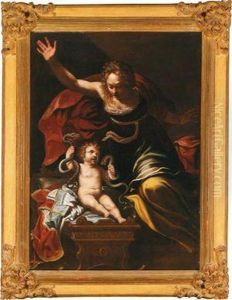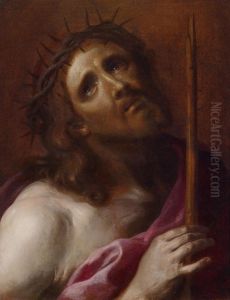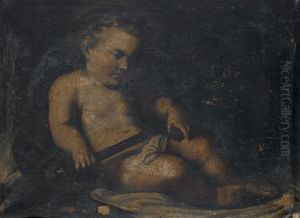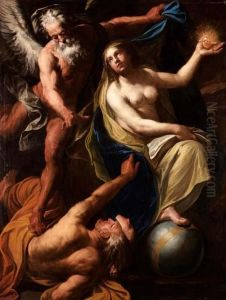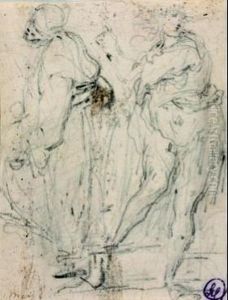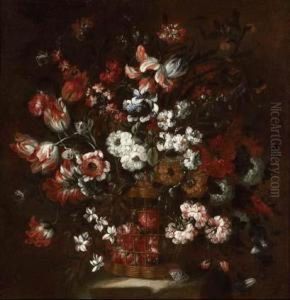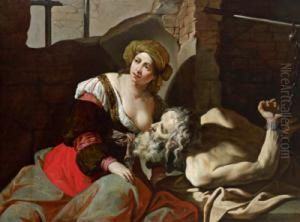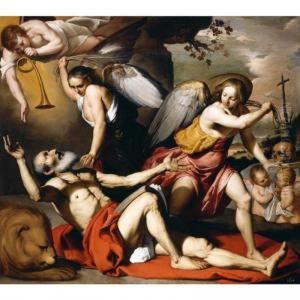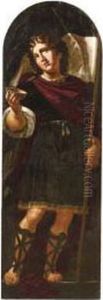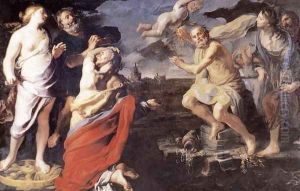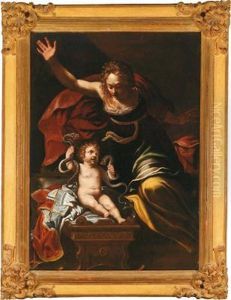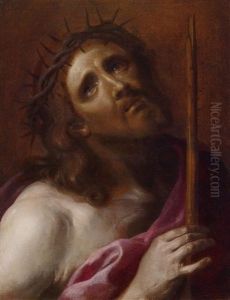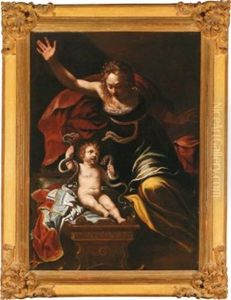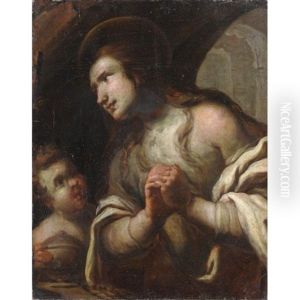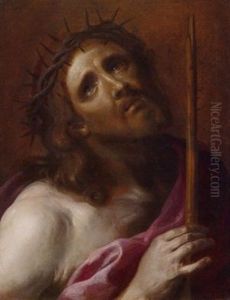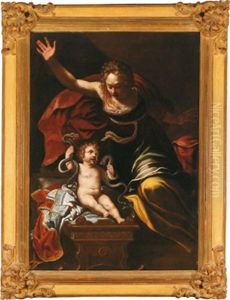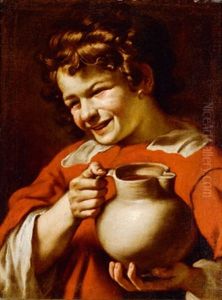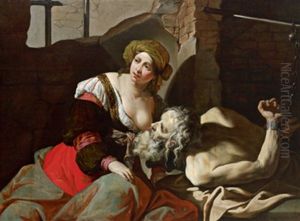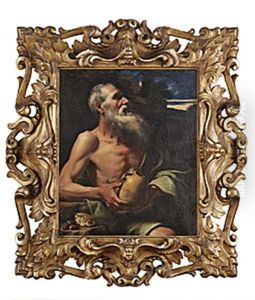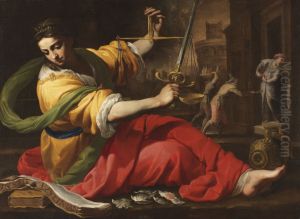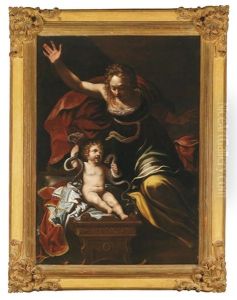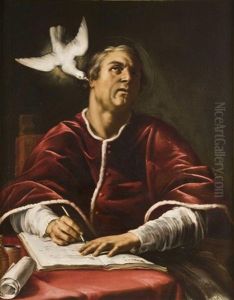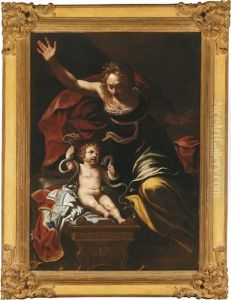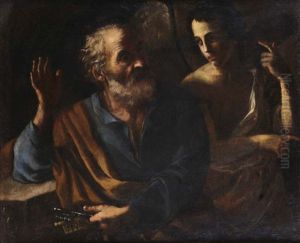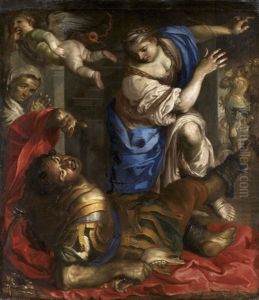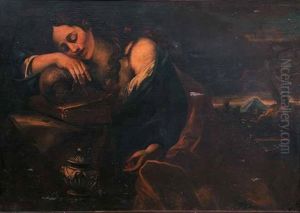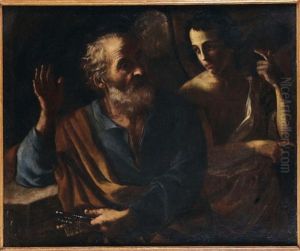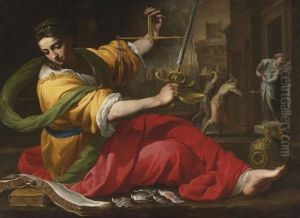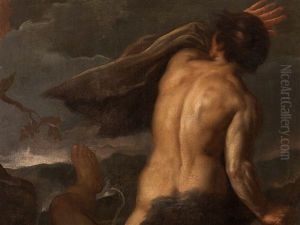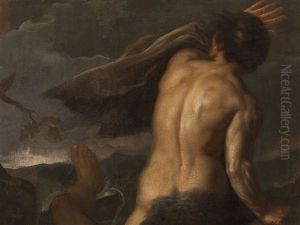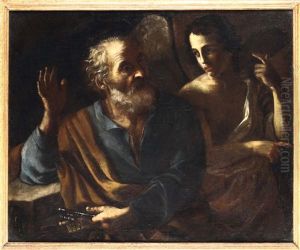Bernardino Mei Paintings
Bernardino Mei was an Italian painter and draughtsman active during the Baroque period, born in 1612 in Siena, Italy. He is considered one of the most significant and innovative artists of his time in Siena, contributing to the evolution of Baroque art in the region. Mei's early education and influences remain somewhat obscure, but it is known that his artistic journey was significantly shaped by the prevailing Baroque tendencies of the era, characterized by dramatic expression, bold use of color, and emphasis on light and shadow.
Mei's work demonstrates a keen interest in the dynamic and expressive possibilities of Baroque art. He was particularly adept at conveying movement and emotion in his compositions, qualities that set his work apart from many of his contemporaries. Throughout his career, Mei worked on various commissions for religious institutions, creating altarpieces and frescoes that reflected his deep understanding of biblical narratives and his ability to interpret them in visually compelling ways.
In addition to his religious works, Bernardino Mei also engaged in the creation of mythological and historical paintings, showcasing his versatility and depth as an artist. His style evolved over the years, showing influences from other prominent artists of the time, including Caravaggio, whose use of chiaroscuro had a notable impact on Mei's approach to light and shadow.
Beyond his contributions as a painter, Bernardino Mei was also involved in the intellectual and artistic life of Siena. He played a role in the Accademia degli Intronati, a key cultural institution in the city, which further demonstrates his engagement with the broader cultural and intellectual currents of his time.
Mei's legacy is preserved in various Italian museums and churches, where his works continue to be admired for their emotional depth and technical mastery. Despite facing competition from other artists and navigating the challenges of the Baroque period, Bernardino Mei established himself as a pivotal figure in the development of Sienese art. He passed away in 1676, leaving behind a body of work that continues to inspire and captivate audiences.
